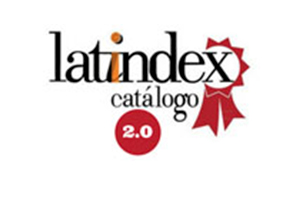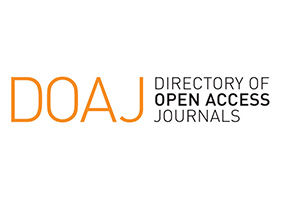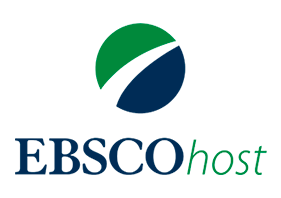Industry 4.0 as Public Policy: A Comparative Study
DOI:
https://doi.org/10.33304/revinv.v20n1-2025005Abstract
Industry 4.0 is based on disruptive technologies such as IoT and AI with ubiquitous connectivity to increase production volume, the ability to diversify products, and improve the flow of data for greater flexibility and anticipation of market changes. Despite the technical component that describes the term, it arises from a public policy strategy proposed by the German government and some authors describe it as a rather political concept. The purpose of this text is to make a comparative analysis of four policy strategies linked to the development of Industry 4.0. The cases chosen for this purpose are Industrie 4.0 of the German government; the Smart Manufacturing Plan of the United States, 2) the “Society 5.0” strategy of the Japanese government; and 4) the lines of action of the Mexican government to boost Industry 4.0 in the country.
Downloads
References
Acatech. (2013). Securing the future of German manufacturing industry Recommendations for implementing the strategic initiative INDUSTRIE 4.0 Final report of the Industrie 4.0 Working Group. https://www.academia.edu/36867338/Securing_the_future_of_German_manufacturing_industry_Recommendations_for_implementing_the_strategic_initiative_INDUSTRIE_4_0_Final_report_of_the_Industrie_4_0_Working_Group
Amaro Rosales, M. A., & Ortiz-Espinoza, Á. (2023). Planes y programas públicos para el fomento de la Industria 4.0 en México: Las experiencias de Guanajuato y Nuevo León. Entretextos, 15(39), Article 39. https://doi.org/10.59057/iberoleon.20075316.202339675
Basir, R., Qaisar, S., Ali, M., Aldwairi, M., Ashraf, M. I., Mahmood, A., & Gidlund, M. (2019). Fog Computing Enabling Industrial Internet of Things: State-of-the-Art and Research Challenges. Sensors, 19(21), 4807. https://doi.org/10.3390/s19214807
Casalet, M. (2018). La digitalización industrial. Un camino hacia la gobernanza colaborativa. Cepal. https://repositorio.cepal.org/bitstream/handle/11362/44266/1/S1800941_es.pdf
CEFP. (2018, abril 13). Programas Prioritarios 2018-2019. https://www.cefp.gob.mx/publicaciones/nota/2018/notacefp0122018.pdf
CEFP. (2019, abril 30). Programas Prioritarios 2019-2020. https://www.cefp.gob.mx/publicaciones/nota/2019/notacefp0222019.pdf
CEFP. (2020, abril 21). Programas Prioritarios 2020-2021. https://www.cefp.gob.mx/publicaciones/nota/2020/notacefp0282020.pdf
CEFP. (2021, abril 6). Programs prioritarios Pre-Criterios 2021-2022. https://www.cefp.gob.mx/publicaciones/infografias/2021/daip/infdaip0282021.pdf
Cimoli, M., Dosi, G., & Stiglitz, J. E. (Eds.). (2009). Industrial Policy and Development: The Political Economy of Capabilities Accumulation. Oxford University Press. https://academic.oup.com/book/32519
Comisión Europea. (2018, febrero). Case Study Report. The German High-Tech Strategy. https://jiip.eu/mop/wp/wp-content/uploads/2018/09/DE_High-Tech-Strategy_Unger.pdf
Downs, A. (1993). El ciclo de atención a los problemas sociales. Los altibajos de la ecología. En Problemas públicos y agenda de gobierno, México (Luis F. Aguilar Villanueva, pp. 137-156). Miguel Ángel Porrúa.
Eslava, S. (2021, octubre 21). Transformación digital de las industrias [Keynote]. Congreso CLTD. https://www.youtube.com/watch?v=ygnTWlXoT5Q
European Regional Development Fund. (2020). Definition of I4.0 Public Policy Initiatives. https://projects20142020.interregeurope.eu/fileadmin/user_upload/tx_tevprojects/library/file_1606752330.pdf
Foladori, G., & Ortiz-Espinoza, Á. (2021). El otro alcance de la 5G. Observatorio del Desarrollo. Investigación, Reflexión y Análisis, 10, 81-84. https://doi.org/10.35533/od.1028.gf.aoe
Fontaine, G. (2022, mayo 27). Multimethods for Policy Analysis.
Forbes. (2018, septiembre 7). Gobierno alista la Plataforma de Industria 4.0 MX. Forbes México. https://www.forbes.com.mx/gobierno-alista-la-plataforma-de-industria-4-0-mx/
Ford, M. (2016). El auge de los robots. Paidos. Electrónico.
Gobierno de Japón. (2019, enero). ABENOMICS. For future growth, for future generations, and for a future Japan. https://www.japan.go.jp/abenomics/_userdata/abenomics/pdf/1901_abenomics.pdf
Gobierno de Japón. (2021, septiembre 28). Realizing Society 5.0. https://www.japan.go.jp/abenomics/_userdata/abenomics/pdf/society_5.0.pdf
Knutov, A., & Styrin, E. (2020). Use of the Internet of Things in Public Governance for Law Enforcement and Inspection: The Case of Russia. En Beyond Smart and Connected Governments. Sensors and the Internet of Things in the Public Sector. Springer.
Kuo, C.-C., Shyu, J. Z., & Ding, K. (2019). Industrial revitalization via industry 4.0 – A comparative policy analysis among China, Germany and the USA. Global Transitions, 1, 3-14. https://doi.org/10.1016/j.glt.2018.12.001
Micheli Thirion, J. (2022). Fuerzas productivas en la digitalización: El contexto y estructura de la Industria 4.0. En Oportunidades y retos para la adopción de la Industria 4.0 en México (pp. 23-36). UNAM - PyV Editores.
Nosalska, K., Piątek, Z., Mazurek, G., & Rządca, R. (2019). Industry 4.0: Coherent definition framework with technological and organizational interdependencies. Journal of Manufacturing Technology Management, ahead-of-print, 837-862. https://doi.org/10.1108/JMTM-08-2018-0238
Oficina del Gabinete. (2020, febrero 19). Society 5.0. https://www8.cao.go.jp/cstp/english/society5_0/index.html
Ortiz-Espinoza, A. (2022). Desafíos para la medición de la Industria 4.0: Una comparación de índices. Observatorio del Desarrollo, 11(32), 64-68. https://doi.org/10.35533/od.1132.aoe
Oztemel, E., & Gursev, S. (2020). Literature review of Industry 4.0 and related technologies. Journal of Intelligent Manufacturing, 31(1), 127-182. https://doi.org/10.1007/s10845-018-1433-8
Porter, M. E., & Heppelmann, J. E. (2014, noviembre 1). How Smart, Connected Products Are Transforming Competition. Harvard Business Review. https://hbr.org/2014/11/how-smart-connected-products-are-transforming-competition
Qureshi, Z. (2017). Tecnología avanzada, pero crecimiento más lento y desigual: Paradojas y políticas. https://www.bbvaopenmind.com/articulos/tecnologia-avanzada-pero-crecimiento-mas-lento-y-desigual-paradojas-y-politicas/
Rothwell, R., & Zegveld, W. (1981). Industrial Innovation and Public Policy: Preparing for the 1980s and the 1990s. https://scholar.google.com/scholar_lookuptitle=Industrial%20Innovation%20and%20Public%20Policy%3A%20Preparing%20for%20the%201980s%20and%20the%201990s&publication_year=1981&author=R.%20Rothwell&author=W.%20Zegveld
Ruiz, A. (2021). Los factores externos de la política pública, un análisis comparado desde el establecimiento de la agenda. Flacso.
Schütze, A., Helwig, N., & Schneider, T. (2018). Sensors 4.0 – smart sensors and measurement technology enable Industry 4.0. Journal of Sensors and Sensor Systems, 7(1), 359-371. https://doi.org/10.5194/jsss-7-359-2018
Schwab, K. (2017). La cuarta revolución industrial. Debate.
SE. (2016a, abril). Crafting The Future: A Roadmap for Industry 4.0 in Mexico. https://amiti.org.mx/wp-content/uploads/2018/01/Crafting-the-future-10-agosto-2016.pdf
SE. (2016b, mayo 23). Programa para el Desarrollo de la Industria de Software y la Innovación PROSOFT (presentación). https://www.gob.mx/cms/uploads/attachment/file/490934/PROSOFT_VF.pdf
Soltovski, R., Resende, L. M. M. de, Pontes, J., Yoshino, R. T., & Silva, L. B. P. da. (2020). Um estudo quantitativo sobre os riscos da Indústria 4.0 no contexto industrial: Uma revisão sistemática da literatura. Revista Gestão e Desenvolvimento, 17(3), Article 3. https://doi.org/10.25112/rgd.v17i3.2245
Volpe Rodrigues, T., dos Santos Filho, V. H., Pontes, J., Martins de Resende, L. M., & Tadashi Yoshino, R. (2020). Government Initiatives 4.0: A Comparison Between Industrial Innovation Policies for Industry 4.0.
Yang, H., Kim, S. Y., & Yim, S. (2019). A Case Study of the Korean Government’s Preparation for the Fourth Industrial Revolution: Public Program to Support Business Model Innovation. Journal of Open Innovation: Technology, Market, and Complexity, 5(2), Article 2. https://doi.org/10.3390/joitmc5020035
Downloads
Published
How to Cite
Issue
Section
License

This work is licensed under a Creative Commons Attribution-NonCommercial-ShareAlike 4.0 International License.
This journal provides immediate free access to its content under the principle of making research available to the public free of charge, which fosters a greater exchange of global knowledge. This work is under a Licencia Creative Commons Atribución-NoComercial-CompartirIgual 4.0 Internacional (Creative Commons Attribution-NonCommercial-ShareAlike 4.0 International License) However, any request by the author to obtain permission for their reproduction will be evaluated.










